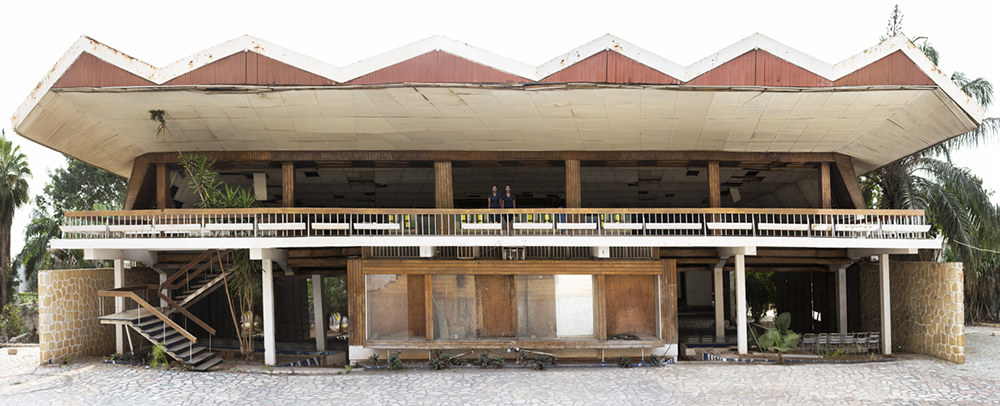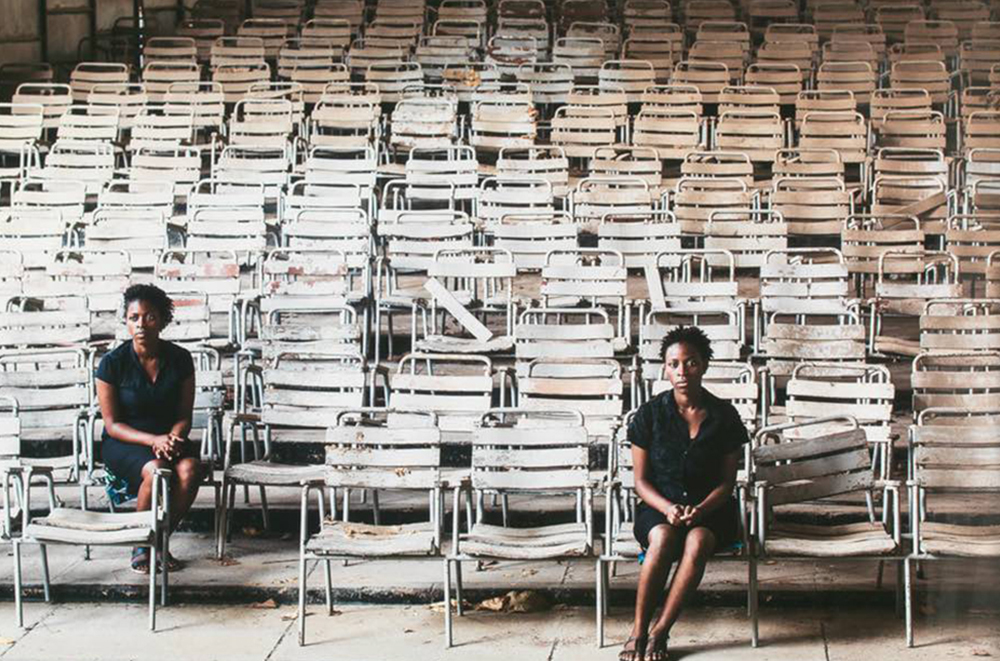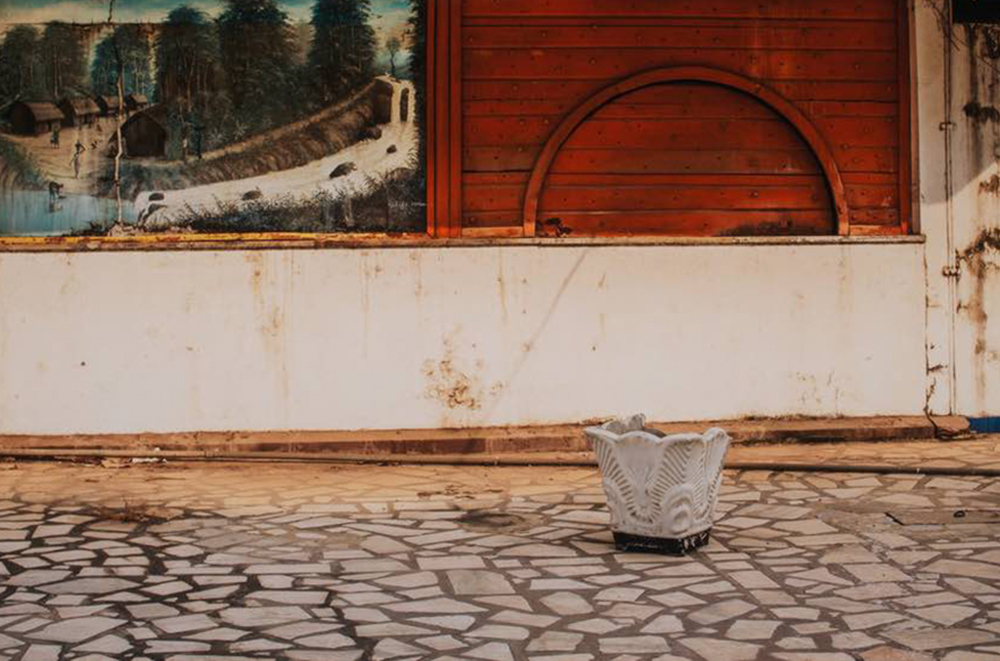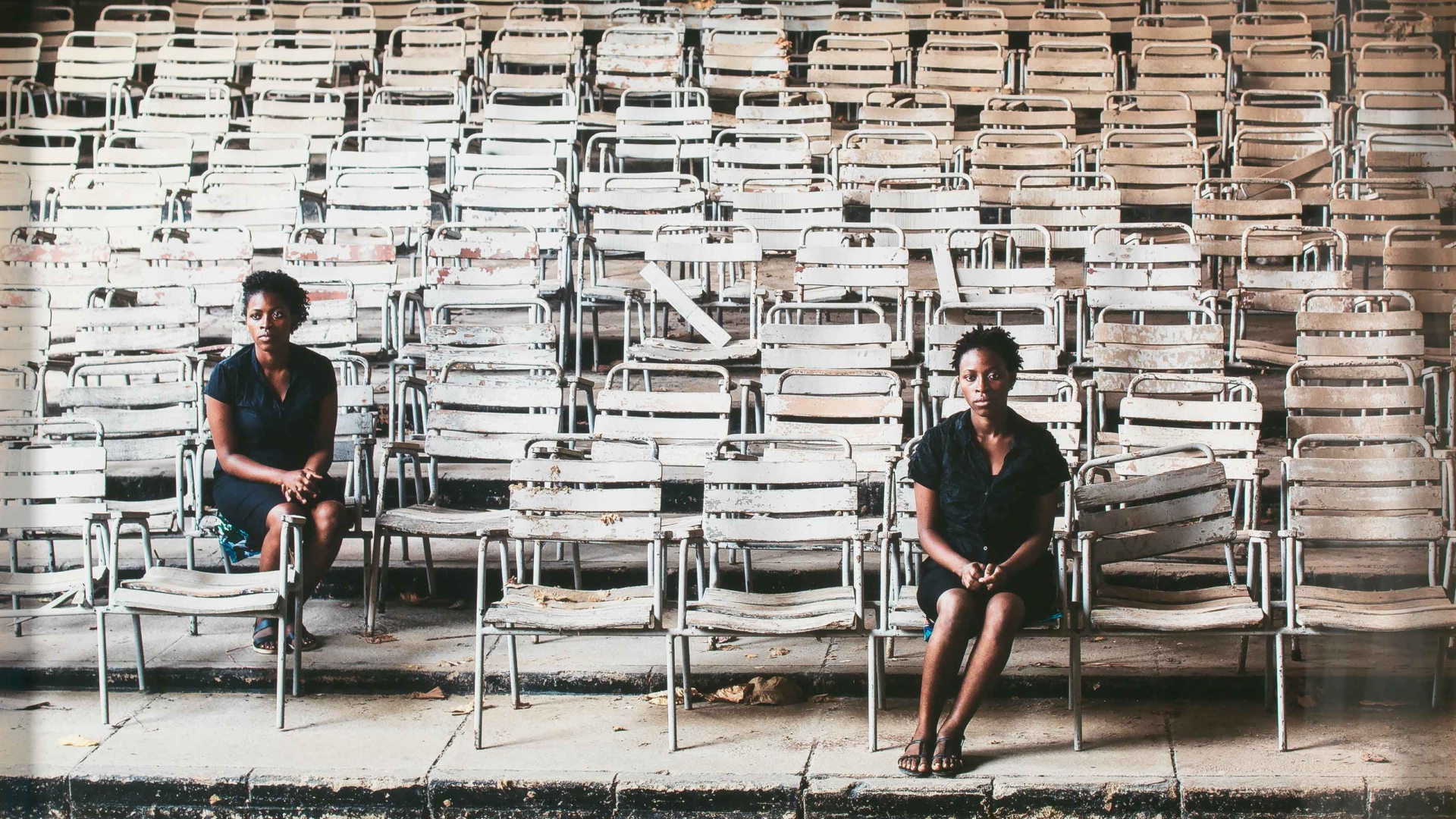Cinema Karl Marx, Luanda
Mónica de Miranda (1976), a Portuguese artist of Angolan descent, lives and works between Lisbon and Luanda and deals with themes that are close to her, like ‘urban archaeology and affective geographies’1 or notions of identity, memory and diaspora.
In 2019, the Calouste Gulbenkian Museum acquired two of her photographic works from the series Cinema Karl Marx: Twins and Ticket Office, dated 2017. These two works, together with a third photograph entitled Cinema Karl Marx, from the same year, constitute a set of work and are part of a broader series, the project Panorama (2017).

Panorama takes on various meanings. The project borrows the name of a well-known, once prosperous hotel, a modernist building now in ruins, situated on Cape Island, in Luanda. Mónica de Miranda photographed this and other buildings in Angola in a state of degradation, namely the Karl Marx Cinema. These images evoke the past and raise uncomfortable but still relevant questions, about issues such as the social and political history of Angola, architectural heritage, post-colonialism and gentrification. Thus, the spectator is invited to reflect on the structures of power involved in the construction of an urban landscape, as well as the current social and political panorama evoked by the latter.

In this context, Cinema Karl Marx – called Cinema Avis prior to independence – was a modernist theatre in Luanda, built during the colonial era and inaugurated in November 1961. The project was designed by two Portuguese architects, Luís Garcia de Castilho and João Garcia de Castilho, who moved to Angola and participated in the construction of various emblematic buildings there. The fact it was a cinema/theatre is relevant because such venues served the interests of the Estado Novo and its ‘metropolitan policy of colonial occupation’,2 acting as a tool of propaganda.
In a video recorded at the time,3 we can see the modernity once showcased by the cinema. On the other hand, Monica Miranda’s photographs offer us a current vision of the exterior and interior of this historic building and its poor state of preservation.


In the triptych Cinema Karl Marx and in the diptych Twins, two female characters, twins with an intriguing presence, stand out. These characters are recurrent in the artist’s work and appear side by side in other series, like Archipelago (2014), Field Work (2016) and Panorama (2017). The diptych Twins combines a documentary record of theatre stalls with the marked theatrical presence of the two sisters. In the first photograph, the spectator is put in the place of the screen – looking at the public while the public looks at them, in a game of seeing and being seen, which echoes in the dichotomy of self and other. According to the artist herself, the twins depict ‘this duality of belonging to the past and the present’.4 This information acquires more importance when we consider the biography of the artist, whose mother is Angolan, and who can identify with feelings of belonging/not belonging, alternating between Portugal and Angola, Europe and Africa. In the second photograph we are led to observe the room in more detail, in a close-up of the chairs, empty and in a state of disrepair. They also evoke the past and reveal the present.
Now abandoned, the building is an uncomfortable reminder of the colonial past, the civil war, the decadence of historical and cultural landmarks and the process of gentrification of which the city was a stage. Mónica de Miranda fixes the image of the place in an attempt to prevent its erasure from memory. In the words of the artist, ‘these ruins exist across Angola. They stand out of their time and resist attempts to forget or erase our history’.5
2 ‘Luanda e suas segregações: uma análise a partir das salas de cinema (1940–1960)‘ in Mulemba, July/December 2017, Rio de Janeiro: URFJ, v. 9, n. 17, p. 80.
3 ‘Novo cinema em Luanda‘, RTP Arquivos.
4 Transcribed from ‘Panorama by Mónica de Miranda, This is Not a White Cube‘.
5 ‘Mónica de Miranda’s best photograph: a ruined hotel in Angola‘, The Guardian.


